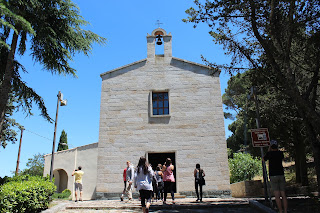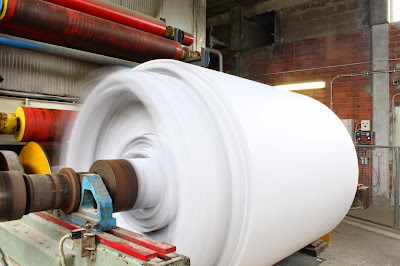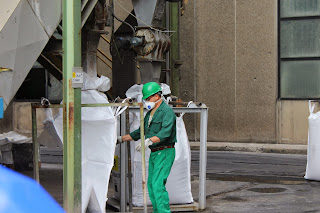We then took the bus up winding roads to the top of a mountain where we were greeted by shepherds for a lunchtime feast. The food was amazing! The meal started with bread, cured meats and a smoked sheep cheese. Then, we were served goat cooked with potatoes and onions. Last was the smoked pig. The shepherds came around about every 5 minutes refilling everyone's wine cup and concluded the meal with "firewater" which was an incredibly strong grain alcohol. There were large groups of older Italian men and woman also there for lunch- after too much wine and firewater, they began taking particular interest in us and wanted to take pictures with everyone. Also after the meal, the shepherds performed a set of shepherd mountain songs, which were made up of harmonized throat singing. Afterwards, they taught everyone traditional group dances.
We spent the night at a hotel. When we got there, some of us decided to hike up the mountain right near the hotel. The view was so incredible, we decided to wake up at 5am the next morning to catch the sunrise at the top of the mountain. We spent the next day visiting several beaches and a coastal cave in the area. The beaches and the cave are surrounded by massive cliffs and mountains and are only accessible by boat.










































